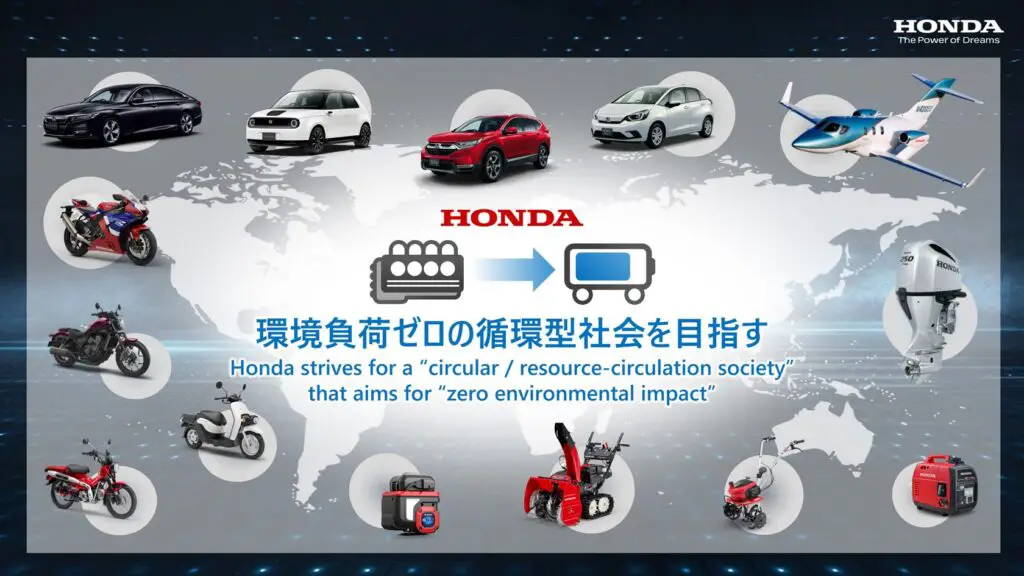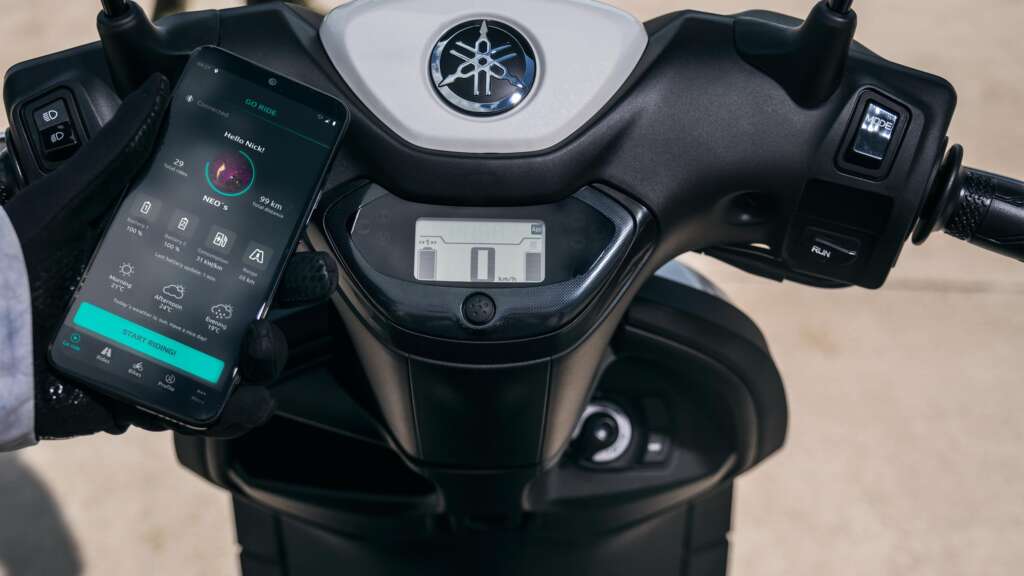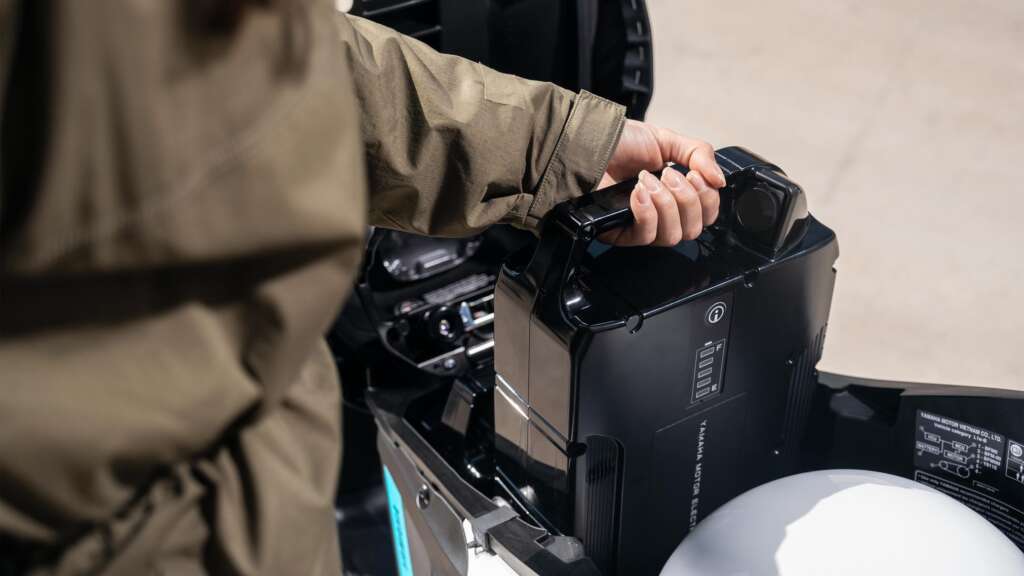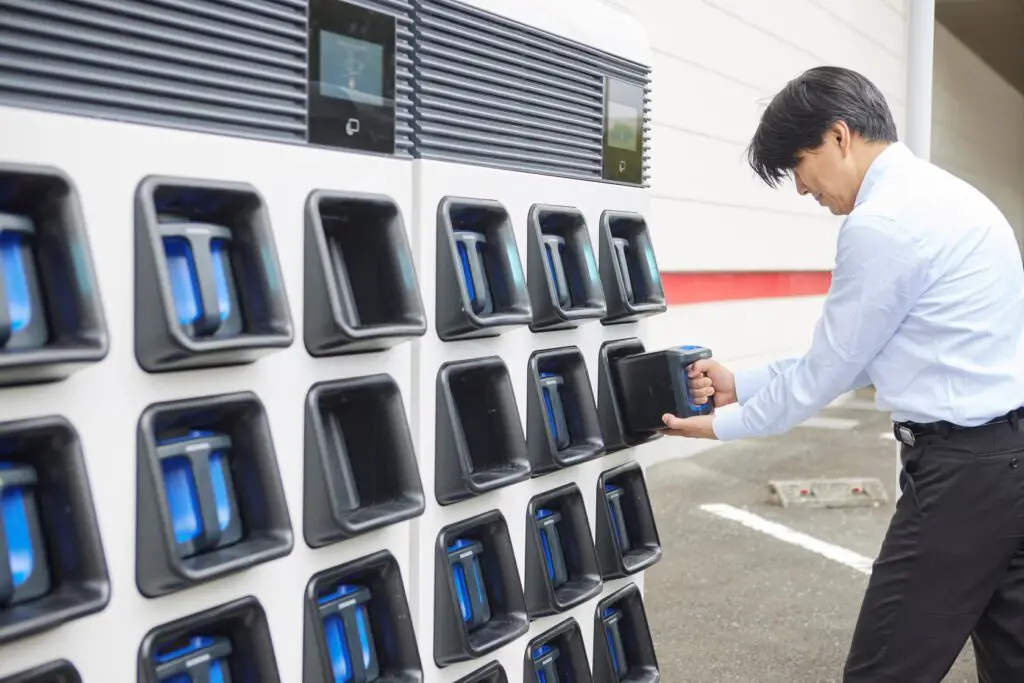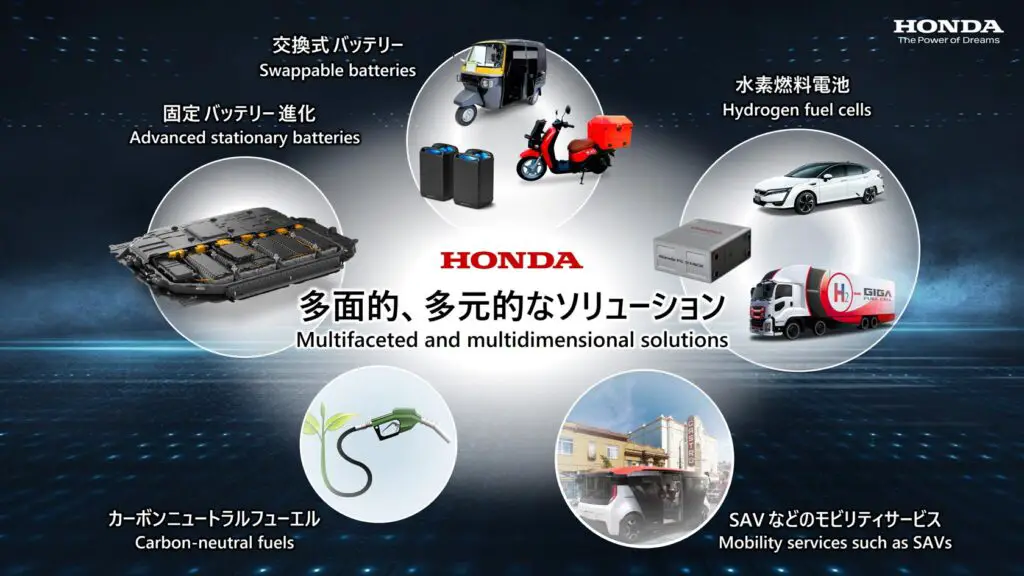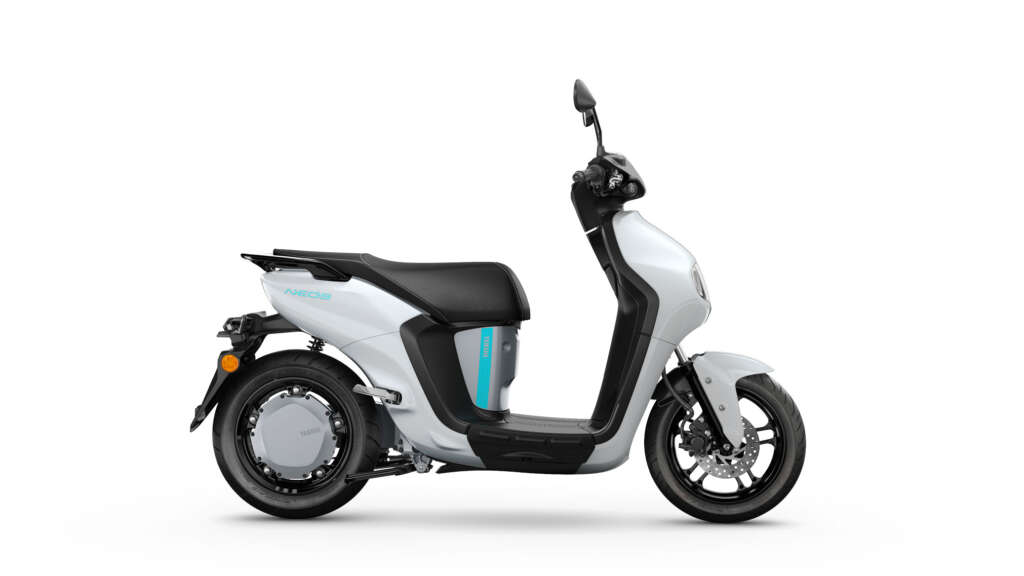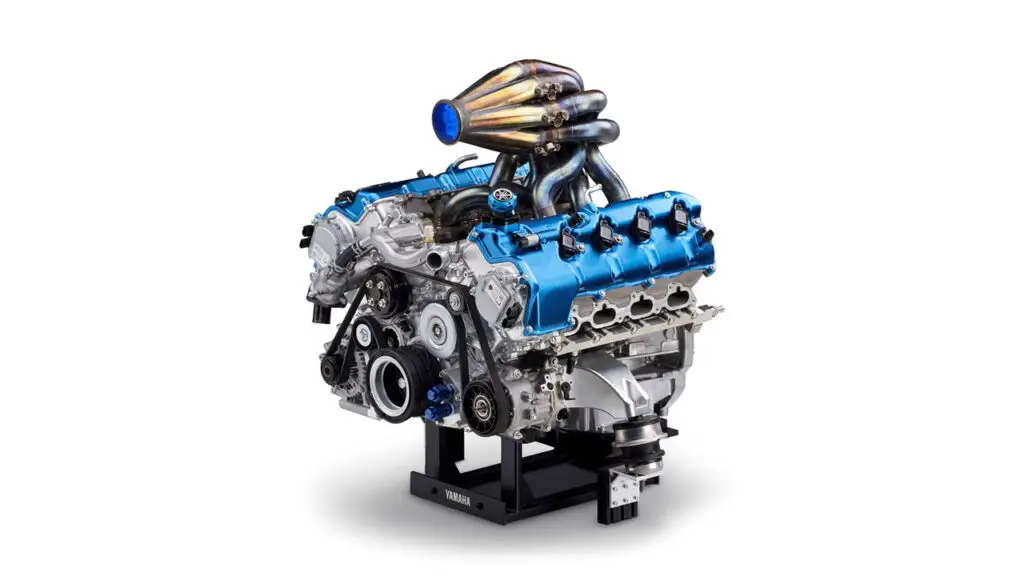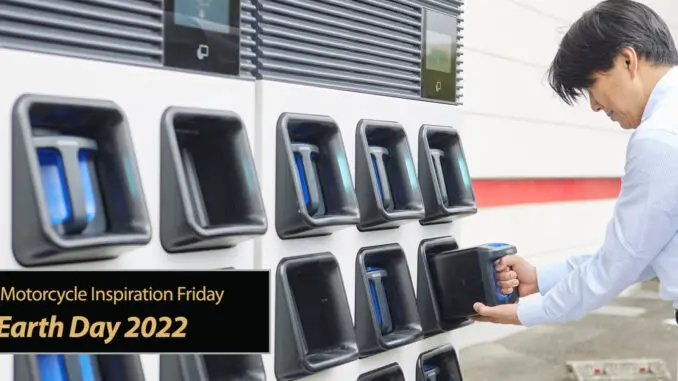
As snow falls outside my window on April 22nd and the thermometer reads 30°F I wonder when Spring will return, apparently climate change is heating up the planet, but obviously not here. We should be 60°F but forecast is for over a foot of snow by the weekend. Oh well, maybe it will be warm enough to get the battery in the bike by May! Welcome to Google’s inspired Inspiration Friday: Earth Day 2022. The one day we reflect upon what we can do, realistically achieve and make the world better for all. Sounds good, but nothing is free and everything comes at a cost.
Researching this week’s Inspiration Friday: Earth Day 2022 is sure DEPRESSING, this isn’t very inspiring at all TBH. The internet is filled with fear, dread, hopelessness and more fear. Argh. We should rename Earth Day to “Guilt Day” or worse! Just look at the United Nations “The Science“, (yes, UN is capitalizing that, not me) and sources like “Sustainability Magazine” give “Top 10 Reasons for Climate Change” that you could put into a list of “Top 1″… YOU, in my option and drop the other 10. Personally, I don’t want to ever eat bugs, own nothing, live in a cave and sit in the dark, thank you very much…haha. Oh their “Top 10 Reasons for Climate Change” list, here you go: 10. Overfishing, 9. Industrialization, 8. Farming, 7. Consumerism, 6. Transport and Vehicles, 5. Oil Drilling, 4. Power Plants, 3. Waste, 2. Deforestation and 1. Oil and Gas.
So back to the Inspiration part of Inspiration Friday: Earth Day 2022. Many, many companies are stepping out to figure these issues out, quickly and hurriedly. Honda and Yamaha I’m going to highlight today, but so many other manufacturers are also doing R&D and a slew of non-oil & gas motorcycles are coming out and are out now. But soon you will not have much choice it seems so if you want that “Shake, Rattle and Roll” gas engine, better be buying it sooner than later my friends.
Take this paragraph from Honda:
“Organizational changes made to strengthen electrification business: In the past, Honda divided its organization by products, namely motorcycle, automobile and power products. However, starting this fiscal year, technology areas which will become the core of the future competitiveness of Honda have been moved from their respective product-based organizations and combined under the newly created Business Development Operations. Such core areas are: electrified products and services, battery, energy, Mobile Power Pack, hydrogen and software/connected technologies that connect all core areas. With this change, Honda will accelerate the speed at which it can move and enhance the “cross-domain” synergy effect among Honda products.”
Honda is also introducing their new Honda Mobile Power Pack (MPP), Honda’s portable and swappable batteries, and initiatives for the expanded utilization of renewable energy in another article below. Interesting idea.
Yamaha on the other hand is going 100% all in:
“(Yamaha is partnering with) Troopy is pleased to announce their transition to 100% electric with the long-term Yamaha’s partnership. Adopting more sober and collaborative mobility was essential to meet urban challenges…Yamaha reveals details of its future electric models and how they have been developed to satisfy the requirements of a wide range of customers in an ever changing world.”
Interesting as appears it is a “shared motorcycle service”, does this mean you won’t be owning a personal pleasure vehicle in the future then? What does this mean for long-distance motorcycle touring and road trips in the very near future?
There appears to be some hope on the horizon for those who want a “real engine”, and that’s:
“At Yamaha “Motor,” the Internal Combustion Engine Is Dear to Us “We are working toward achieving carbon neutrality by 2050, Yamaha Motor has been commissioned by Toyota Motor Corporation to develop a 5.0-liter V8 engine for automobiles that is fueled entirely by hydrogen.”
While I do not think we will see many hydrogen V8 engines in motorcycles, maybe, just maybe they can make them small V-Twins, inline-4’s, etc. That’s pretty inspiring.
So many questions! Happy Earth Day everyone.
Total Motorcycle would like to thank Google, Honda, Yamaha as well as the hundreds of millions of motorcycle riders who visit TMW for inspiring us to bring you this week’s Inspiration Friday: Earth Day 2022. Each week we bring you another Inspiring Motorcycle story to inspire you to get out and ride!
Join Total Motorcycle here and help us by joining Total Motorcycle’s new YouTube Membership and $1/mo Patreon channels. Please help us help riders, support motorcyclists and motorcycling worldwide today.
On a quick personal note, my heart goes out to all those who live around the world that are being negatively affected by the sanctions on oil and gas, metals, energy, materials, etc, etc, I don’t know how you are going to eat, heat your homes or drive you cars/motorcycles come fall but best of luck to you and that we all can find a peaceful way out of this current crisis.
Honda introduces its progress toward electrification and business transformation for the future
TOKYO, Japan, April 12, 2022 – Honda Motor Co., Ltd. today held a press briefing on its initiatives in automobile electrification business that included participation of the following Honda executives.
A summary of the briefing follows:
- Honda initiative for electrification
Honda is striving to be a company which serves as a source of “power” that supports people around the world who are trying to do things based on their own initiative and that helps people expand their own potential. To this end, Honda strives to realize “the joy and freedom of mobility” by seeking a “zero environmental footprint.”
<Solidifying existing businesses>
Over the past several years, Honda has been pursuing various initiatives toward the direction to “solidify existing businesses” and to “prepare for new growth” and these initiatives have begun showing positive results in the areas of products, businesses and new technologies.
・The structure of Honda automobile business has made steady improvement. As of today, the total number of variations at the trim and option level for global models has been reduced to less than one-half of the number in 2018 (Target: a reduction to one-third by 2025).
・As for cost associated with global automobile production, Honda is on track to achieve its 10% reduction target, compared to the cost recorded in 2018.
Honda will continue to accelerate its efforts to generate resources by solidifying existing businesses and invest such resources in electrification and the preparation for new growth.
<Unique Honda approach>
As the world’s largest power unit manufacturer with annual sales of approximately 30 million units of mobility products including motorcycles, automobiles, power products, outboard motors and aircraft, we aim to realize carbon neutrality for all products and corporate activities Honda is involved in by 2050, striving to eliminate carbon emissions from power sources of a wide variety of products. To this end, Honda believes that a multifaceted and multidimensional approach is needed, not a mere replacing of engines with batteries.
Including the utilization of swappable batteries and hydrogen as well as electrification of automobiles, Honda will offer a variety of solutions for all of its mobility products according to how its customers use the products in various countries and regions.
Furthermore, with the connected platform, which connects all these elements, Honda will enhance the convenience and efficiency of society as a whole.
<Organizational changes made to strengthen electrification business>
In the past, Honda divided its organization by products, namely motorcycle, automobile and power products. However, starting this fiscal year, technology areas which will become the core of the future competitiveness of Honda have been moved from their respective product-based organizations and combined under the newly created Business Development Operations. Such core areas are: electrified products and services, battery, energy, Mobile Power Pack, hydrogen and software/connected technologies that connect all core areas. With this change, Honda will accelerate the speed at which it can move and enhance the “cross-domain” synergy effect among Honda products.
- Initiatives for automobile electrification business
<Battery procurement strategy>
The key challenge in the EV era is the global procurement of batteries. Honda has two basic approaches for its battery procurement strategy.
1) Now and for the time being:
Honda will ensure stable procurement of liquid lithium-ion batteries in each region by strengthening the external partnership.
- North America: Honda will procure Ultium batteries from GM. Separately, aside from GM, Honda is exploring the possibility of creating a joint venture company for battery production.
- China: Honda will further strengthen our collaboration with CATL.
- Japan: Honda will procure batteries for mini-EVs from Envision AESC.
2) From the second half of the 2020s:
Honda will further accelerate its independent research and development of next-generation batteries. For the all-solid-state batteries it currently has under development, Honda decided to build a demonstration line, investing approximately 43 billion yen, with a goal to make it operational in Spring 2024. Honda aims to adopt its next-generation batteries to models to be introduced to the market in the second half of the 2020s.
<Introduction of EVs>
Specific plans for the market introduction of EV models are as follows.
1) From now through the second half of the 2020s:
Honda will introduce products tailored to the market characteristics of each region.
- North America: In 2024, Honda will introduce two mid- to large-size EV models currently being developed jointly with GM. (Honda brand: All-new Prologue SUV, Acura brand: an EV SUV model.)
- China: Honda will introduce a total of 10 new EV models by 2027.
- Japan: In early 2024, Honda will first introduce a commercial-use mini-EV model at the 1-million-yen price range. Then, Honda is planning to make the timely introduction of personal-use mini-EVs and EV SUVs.
2) After the second half of the 2020s:
Assuming it will become the time of the popularization of EVs, Honda will begin introducing the best EVs from a global perspective.
・In 2026, Honda will begin adopting Honda e: Architecture, an EV platform that combines the hardware platform and software platform.
・Through the alliance with GM, Honda is planning to introduce affordable EVs in 2027, with a cost and range that will be as competitive as gasoline-powered vehicles, starting from North America.
Through these initiatives Honda is planning to launch 30 EV models globally by 2030, with a full lineup from commercial-use mini-EVs to flagship-class models, and Honda is planning for production volume of more than 2 million units annually.
<EV production>
- As for EV production operations, in China, Honda is planning to build a dedicated EV plant in Guangzhou as well as Wuhan.
- Honda is planning for a dedicated EV production line also in North America.
- Strengthening of the areas of connected / software technologies
Honda is striving to offer greater value not only with each of our products, but when various Honda products become linked and realize a connectivity beyond their product domains.
The key to achieve such connectivity is the technologies and frameworks, where Honda positions its electrified products as “terminals” and connects energy and information stored in each product with its users and society. Therefore, Honda will work on the establishment of the cross-domain connected platform, which will create new value for its customers.
In the areas of electrification technologies, including batteries, as well as software and connected technologies, for the acceleration of its development efforts, Honda will strive for a significant enhancement of development capabilities, which will include the strengthening of its human resource recruiting from outside Honda.
Also, in these areas, Honda will proactively pursue inter-industry collaboration and alliances, as well as investments in startups.
- Financial strategies that support the transformation of Honda businesses
While making progress in electrification, Honda will shift focus from non-recurring hardware sales business and strive to transform the portfolio of Honda businesses by combining hardware and software to expand connections with its customers and the range of its businesses. Also, after 2030, Honda will strengthen its combined solution business and also businesses in new areas. To realize such transformation of the business portfolio, Honda has been putting effort into solidifying its existing businesses.
<Improvement of the earnings structure>
In addition to its steady efforts to solidify existing businesses, Honda strived to reduce costs from all directions while facing a difficult business environment due to issues such as the pandemic and semiconductor shortage. As a result, the business structure has been improving, and Honda is confident that its continuous efforts will enable an adequate achievement of the return on sales (ROS) of more than 7%, which had been Honda’s mid- to long-term target. Also, the net cash balance was 1.9 trillion yen (at the end of the third quarter ended Dec. 31, 2021), maintaining a healthy level.
<Resource investments over the next 10 years and utilization of external funding>
- Honda will budget approximately 8 trillion yen for its research and development expenses. Of all R&D areas, Honda is planning to invest approximately 5 trillion yen in the areas of electrification and software (Approx. 3.5 trillion yen for R&D expenses and approx. 1.5 trillion yen for investments).
- For the preparation of new growth, including new technology areas and resource circulation, Honda will invest approximately 1 trillion yen over the next 10 years.
- Honda will be active in investing in startups with high-potential advanced technologies and business models at a scale of 10 billion yen per year, which will expand the range of Honda technologies and businesses.
- Based on its policy to utilize external funding methods on an as-needed basis, Honda issued Green Bonds totaling US$2.75 billion in March of this year. By allocating the proceeds from these Green Bonds to the development and production of zero-emission vehicles such as EVs and FCVs, Honda will further accelerate our initiatives toward the realization of a society that aims for zero environmental impact.
- Sports models
While taking on challenges toward carbon neutrality and electrification, Honda always has a passion to offer FUN for its customers. The “joy of driving” will be passed on to our models even in the era of electrification, and Honda will globally introduce two sports models, a specialty and a flagship model, which will embody Honda’s universal sports mindset and distinctive characteristics.
Honda Introduces Initiatives for the Utilization of Honda Mobile Power Pack, portable and swappable batteries
TOKYO, Japan, October 29, 2021 — Honda Motor Co., Ltd. today held a media briefing on the further utilization of Honda Mobile Power Pack (MPP), Honda’s portable and swappable batteries, and initiatives for the expanded utilization of renewable energy.
A summary of the conference follows.
Initiatives for the expansion of renewable energy utilization
– In pursuit of carbon neutrality –
- Achieving an adequate electricity supply-demand balance by installing a “buffer function” using MPP and other devices.
- Improving usability of renewable energy by addressing the key issue facing renewable energy, its sensitivity to natural conditions, by reducing the charging load on the power grid (with the use of the “buffer function”).
- Considering the possibility of supplying electricity stored in MPP to the power grid in case of a power shortage.
Honda is striving to realize carbon neutrality for all products and corporate activities Honda is involved in by 2050. As one of the initiatives Honda will pursue to realize this goal, Honda has developed the concept of “Honda eMaaS” through which Honda will contribute to the “freedom of mobility” and “expanded use of renewable energy” by connecting electrified mobility products and energy service. Based on this concept, Honda will expand the use of renewable energy by broadening the range of electrified products through electrification of its motorcycle and automobile products and through more utilization of MPP and also by enabling infrastructure-linked smart power operations.
One of the challenges in using renewable energy as a power source is that the amount of electricity generated cannot be tailored to the actual demand because the amount of electricity generated fluctuates depending on natural conditions such as weather, climate, and time of day. When the amount of power generation is too small compared to the power demand, it could cause power outages. In reverse, the amount of power generation is too large, it could cause power shutoffs to prevent excess load put on the grid, which may result in disposal of excess electricity.
To resolve these issues and expand the use of renewable energy, it is important to establish a “buffer function” which will help to achieve an adequate electricity supply-demand balance. The “buffer function” means the ability to adjust the amount of power supply by temporarily storing excess electricity using MPP or other devices.
With the expanded use of MPP, it will become easier to use renewable energy which is sensitive to natural conditions. For instance, when an excess amount of electricity is generated during daytime hours through solar power generation, MPP will serve as a buffer by storing such excess electricity. Then, during late afternoon hours when electricity supply runs short of the demand, the electricity stored in the MPP during the daytime can be used to achieve peak-load shifting (or “peak shaving” that lowers and smooths out peak loads) to reduce the charging load on the power grid.
Moreover, further down the road, Honda is considering the possibility of supplying electricity stored in MPP to the power grid in case of a power shortage by connecting Honda Mobile Power Pack Exchanger e: to the power grid. Honda Mobile Power Pack Exchanger e: is a battery swapping station, currently under development, which can charge multiple MPPs simultaneously.
Future expansion of MPP applications
- Considering the secondary use of MPP which becomes unsuitable for the use of mobility products due to degradation.
- Expanding the use of MPP beyond the boundaries of industries, while also working toward the standardization.
Working toward the realization of carbon neutrality, Honda is striving to further expand the use of MPP for a broad range of products. At the same time, Honda is working on plans for secondary use (repurposing) of MPP when it becomes unsuitable for the use of mobility products due to a reduced battery capacity as a result of degradation, including uses as a storage battery for household use and as a power source for other products.
Moreover, various companies are currently considering the development of products which will use MPP as a power source. In order to accelerate such a development and expand the use of MPP, Honda has been working toward the establishment of industry standards for portable and swappable batteries.
- Background to the development of MPP
As a company that provides customers worldwide with a broad range of products in the areas of motorcycles, automobiles and power products, Honda sees it as its important responsibility to expand the use of clean energy for mobility and people’s daily lives. One of the concepts born of such a recognition of a challenge was the “shared use of portable and swappable batteries.”
Honda developed MPP in order to enable people to use electricity from renewable energy sources conveniently, anytime and anywhere, for their mobility and daily lives by storing a small portion of such electricity in a portable and swappable battery. Moreover, MPP enables people to store and manage electricity, get connected with others and mutually accommodate electricity needs within a small unit such as mobility products and houses.
With an aim to realize such resilient (flexible) society, Honda introduced MPP in 2017. The utilization of MPP began when it was applied to a Honda electric motorcycle model which went on sale in 2018. The new GYRO CANOPY e: business-use electric three-wheeled scooter which went on sale today features Honda Mobile Power Pack e: (MPP e:), an all-new MPP with an increased battery capacity.
- Honda’s initiatives to date toward the expansion of MPP utilization
Since February 2019, Honda has been conducting demonstration testing in the Philippines for the utilization of surplus electricity using MPP and electric motorcycles for the purpose of realizing “local generation and local consumption” of electricity from renewable energy sources.
Moreover, since July 2019, Honda has been conducting demonstration testing in Indonesia of battery sharing using MPP and electric motorcycles for the purpose of accelerating electrification of mobility products and expanding the use of renewable energy.
Furthermore, since February 2021, Honda has been conducting demonstration testing of battery sharing for electric tricycle taxies in India.
In light of the results of this demonstration testing, Honda will begin a battery sharing service in India, using the MPP e: in the first half of 2022.
- Key features of MPP e:
MPP e: is a lithium-ion battery capable of storing a large amount of electricity, more than 1.3kW, which can be utilized as a power source for a broad range of electric devices including small-sized mobility products.
- High versatility: In addition to mobility products, MPP e: can be utilized as a power source for a broad range of compatible devices.
- High durability: By considering heat dissipation during continuous discharging, deterioration due to high temperature is prevented, and sufficient water resistance, vibration resistance and shock resistance are ensured under the expected normal operating environment.
Data utilization: The built-in control unit recognizes the conditions of the MPP e: and records the occurrence of all events. This data will be collected through the connector while MPP e: is charging and then utilized for the battery sharing operation and other secondary uses.
Introducing the Next Generation of Shared Scooters: a Long-term Partnership between Yamaha and Troopy for an All-Electric Multi-Vehicle Offer.
Troopy is a self-service shared scooter operator launched in Paris in 2018 at the initiative of Groupe Chapat, a mobility specialist. After several years to develop a quality shared scooter service, today, Troopy is pleased to announce their transition to 100% electric with the long-term Yamaha’s partnership. Adopting more sober and collaborative mobility was essential to meet urban challenges, from now, Troopy gives new meaning to shared mobility by promoting everyone’s quality of life and freedom of movement.
Eric de Seynes: “As a trusted partner for Yamaha, Troopy started scooter-sharing operations with the Tricity 125 in Paris, in 2018. Since then, Troopy has enabled tens of thousands of users to experience Yamaha’s Leaning Multi-Wheel Technology, whilst facilitating easy and safe commuting in an urban and suburban environment.
Given the recent evolution of the mobility environment across Europe, very soon Troopy fleet will be made of two Yamaha electric scooter models, featuring advanced zero-emission technology, to meet the commuting needs of urban users. The two Yamaha models utilized will be the new Neos in its sharing version and the E01, a scooter that has been specifically developed for large-scale pilot projects like the one to be run by Troopy. This important step in our partnership will allow scooter sharing users to benefit from the best-in-class service offered by Troopy, combined with the undisputable quality of Yamaha’s scooters.”
This partnership had been released on March 16th at 9am CET during the AUTONOMY Event in Paris, France. World’s first trade show for mobility solutions that is now the world’s most important annual mobility gathering.
Troopy’s fleet will be composed with Yamaha E01 and NEO’s electric scooters – Both models will be available end of this summer and equipped with specifics and exclusives features needed for a sharing in Paris, France.
E01 – EV Scooter of Envy for the New Era
Yamaha E01 comes equipped with all the functionality expected of a 125cc class scooter and features performance well suited for short- to medium-range mobility. The E01 is a model taking full advantage of Yamaha’s motorcycle technology and know-how throughout its design and engineering.
The powertrain consists of an interior permanent magnet synchronous motor delivering a maximum output of 8.1 kW and fed by a 4.9 kWh lithium-ion battery. This combination provides a smooth, quiet and low-vibration ride characterized by outstanding power available at very low speeds.
With a total lot of 500 units planned, the E01 had been launched as a proof-of-concept model in Europe, Japan, Taiwan, Indonesia, Thailand and Malaysia for the purpose of grasping user needs, ascertaining possibilities with related businesses, opening up new markets and more. The model had been produced at the Iwata Main Factory in Japan.The potential launch partners envisioned include vehicle sharing companies, local governments and government agencies. In line with the traffic environments and infrastructure conditions in each market.
NEO’s – Urban mobility that is easy, silent and accessible to all
For many decades Yamaha has been one of the most active and respected manufacturers in the important European 50cc scooter market. From the 1990s the company produced some of the most successful models in the industry under the Yamaha and MBK brands, including true icons like the BW’s/Booster, Aerox/Nitro and NEO’s/Ovetto.
Along with its core business as a manufacturer of internal combustion engines, Yamaha has devoted considerable effort to the research and development of electric scooters for more than 30 years. In 1991, the company introduced the Frog, its first electric scooter, at the Tokyo Motor Show. Since then, Yamaha has not stopped working on the development of such vehicles and has launched several electric models in various Asian countries.
In 2022, the next-generation NEO’s is Yamaha’s first mass-produced “50cc equivalent” electric scooter to be launched in the European market. This new affordable zero-emission model is ready to play its part in transforming urban mobility in European cities.The NEO’s has always been known for its simple, universal yet attractive style. The new electric model features an ingenious new body; upright styling and minimal front and rear overhang give this new scooter a distinctive character.
The compact body features soft, rounded shapes that soothe and give an easy-to-drive feel to this ultra-quiet zero-emission scooter. Surrounded by white bezels that give them a fresh, sober and contemporary look, the new dual-optic LED headlights are inspired by the iconic face of the original NEO’s.
In addition to its aesthetic lines, the NEO’s is equipped with practical aspects that make it a leading urban scooter. Rubber moldings applied to the interior contour not only give the NEO’s a sleek exterior appearance, they also help to protect it from minor bumps and scrapes, while covering various fixings to provide a more elegant finish.
The start of new era in electric mobility
Eric de Seynes – Yamaha Motor Europe’s President & CEO – announces today the company’s entry into the world of electric personal mobility. “The concept of mobility has continuously evolved over the years, and consequently our cities and infrastructures have adapted to these changes. However, one thing that has remained the same over the decades is the universal desire and need for personal mobility that gives a real sense of freedom.”
Yamaha is focused on delivering creative and innovative new solutions to support the evolving needs of its customers – and in the première of Switch ON, Yamaha reveals details of its future electric models and how they have been developed to satisfy the requirements of a wide range of customers in an ever changing world.
Two new electric Yamaha scooters
In the next few weeks Yamaha will launch the all-new NEO’s – a smart, accessible and high quality “50cc-equivalent” electric scooter that was first displayed at the 2019 Tokyo Motor Show as the E02 prototype. This will be followed by Yamaha’s first “125cc-equivalent” scooter that will showcase the company’s very latest engineering and technology. Derived from the E01 prototype – also displayed at Tokyo – this yet to be named model will be the protagonist in a Proof of Concept activity that Yamaha will set up in a major European city with a scooter sharing partner.
30 years’ experience in eBike drive units
Yamaha has a long and distinguished track record in electric vehicle development that goes back to the early 1990s when the company created the first Power Assist System (PAS) which formed the basis of the world’s first production eBike. Since then Yamaha has been at the forefront in the development of lightweight and compact electric drive units for eBikes, with approximately 7 million produced in three decades.
In recent years the demand for eBikes has grown exponentially, with more than 5 million sold in Europe in 2021 – many equipped with Yamaha drive units – therefore the company has made the decision to expand its production capacity and start producing drive units in Europe. While remaining totally committed to developing cutting-edge drive unit systems for the company’s many OEM bicycle manufacturers, Yamaha is about to launch three new ‘own brand’ eBikes in the All Mountain, Gravel and Urban segments. Full details will be revealed during the summer, and these new Yamaha eBikes will start to be available before the end of 2022 through Yamaha’s Powered Two Wheeler network, with the target to complete the European Distributor set-up in 2023.
The moped is back
But this is just the beginning, and to underline the company’s future potential in every class of electric urban mobility, Yamaha presents the B01 – a new hybrid prototype that intelligently combines eBike S-Pedelec functionality with moped performance and all urban terrain ability. Currently a concept model created by Yamaha Motor Europe in association with long-term partners Fantic Motor and Motori Minarelli, B01 will evolve into a production machine that will further expand Yamaha’s electric mobility range.
Eric de Seynes concluded, stating that “Yamaha is excited to expand its personal mobility range and open a whole new chapter in the history of the company. Backed up by Yamaha’s world-class engineering capabilities and supported by a professional dealer network, the introduction of these new electric products and related services will inspire a new generation of customers.”
Tapping the Potential Within 100% Hydrogen-Powered Engines
Developing a V8 high-performance hydrogen engine under commission from longtime partner Toyota Motor Corporation
Yamaha Motor has been commissioned by Toyota Motor Corporation to develop a 5.0-liter V8 engine for automobiles that is fueled entirely by hydrogen. In Japan, Toyota and other automotive-related companies are about to begin a collaborative effort to expand the range of fuel options for internal combustion engines.
As Yamaha “Motor,” the Internal Combustion Engine Is Dear to Us
“We are working toward achieving carbon neutrality by 2050,” explained Yamaha Motor president Yoshihiro Hidaka. “At the same time, ‘Motor’ is in our company name and we accordingly have a strong passion for and level of commitment to the internal combustion engine.”
In November last year, the five companies of Kawasaki Heavy Industries, Subaru Corporation, Toyota Motor Corporation, Mazda Motor Corporation, and Yamaha Motor jointly announced they would begin discussions for conducting collaborative research into possible avenues for expanding the range of fuel options for internal combustion engines in the quest for carbon neutrality. And at the announcement venue, the V8 hydrogen engine shown above, which was developed by Yamaha for Toyota, was unveiled to the public. The unit is based on the 5.0-liter engine in the Lexus RC F luxury sport coupe, with modifications made to the injectors, cylinder heads, intake manifold, and more, and delivers up to 450 hp at 6,800 rpm and a maximum 540 Nm of torque of at 3,600 rpm.
“Hydrogen engines house the potential to be carbon-neutral while keeping our passion for the internal combustion engine alive at the same time,” proclaimed President Hidaka at the venue. “Teaming up with companies with different corporate cultures and areas of expertise as well as growing the number of partners we have is how we want to lead the way into the future.”
The Merits of Hydrogen: Not a Stand-In for Gasoline
Yamaha began developing a hydrogen engine for automobiles about five years ago. Takeshi Yamada from the Technical Research & Development Center’s Automotive Development Section is a member of the hydrogen engine development team and he began to sense the depth of potential in the powerplant as the project progressed.
“I started to see that engines using only hydrogen for fuel actually had very fun, easy-to-use performance characteristics,” he explains. “Hydrogen engines have an innately friendly feel that makes them easy to use even without resorting to electronic driving aids. Everyone who came to test-drive the prototype car would start off somewhat skeptical, but emerged from the car with a big smile on their face at the end. As I watched this, I started to believe that there is actually enormous potential in the characteristics unique to hydrogen engines instead of simply treating it as a substitute for gasoline.”
Another thing that Yamada and the team value in the development process is Kanno Seino, meaning sensual or exhilarating performance. One example is the harmonic high-frequency exhaust note produced by the engine’s 8-into-1 exhaust manifold. “This is a challenge we can sink our teeth into as engineers and I personally want to pursue not just performance but also a new allure for the internal combustion engine that the world has yet to see,” declares Yamada.
What he and his fellow engineers believe in is the potential of a fully hydrogen-powered engine. Working together with his gradually expanding network of partners, Yamada undoubtedly feels they have one hand on the door to unlocking that potential.



